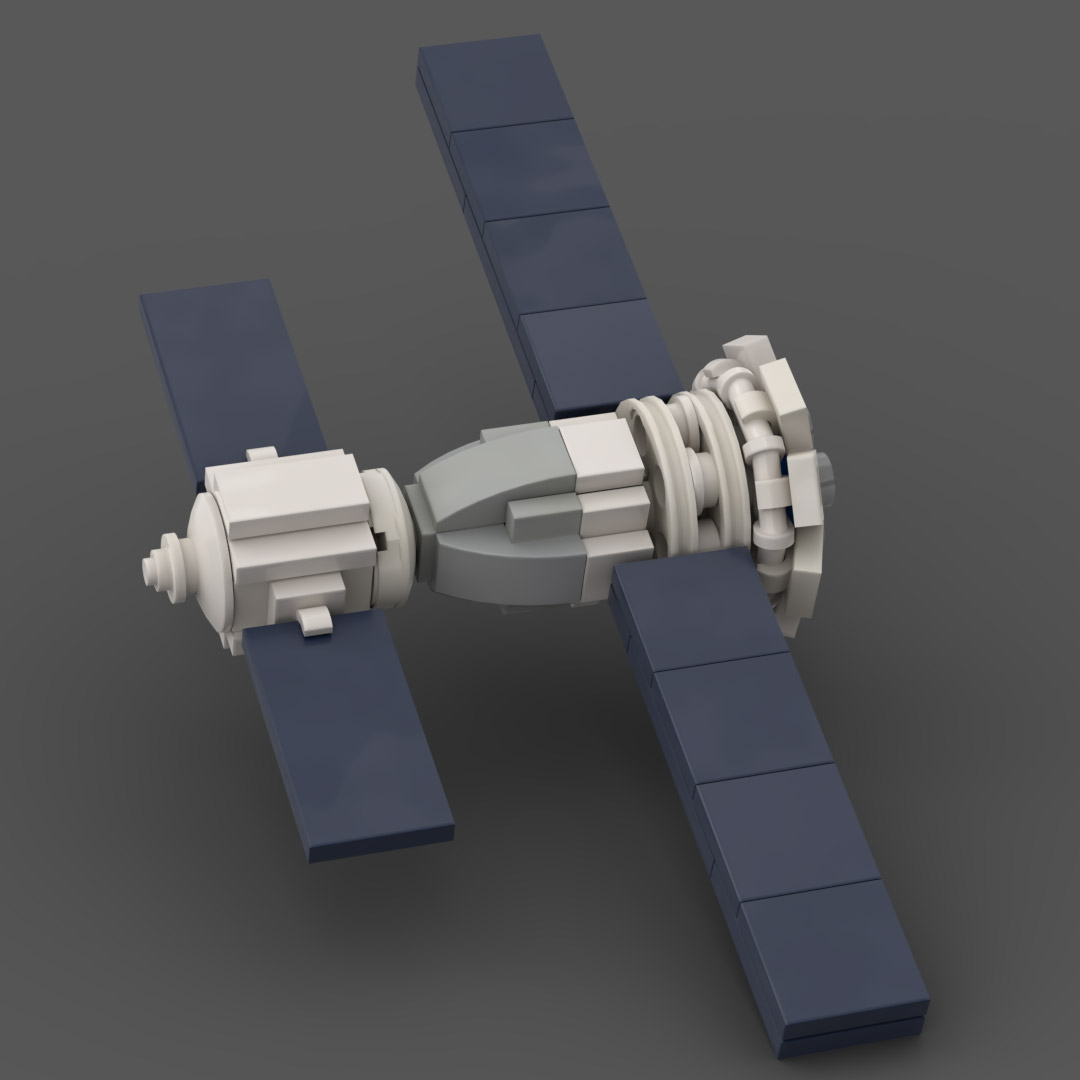
LEGO Designer:
Smazmats
Designed: August 2020
Categories:
Manned Spaceflight,
All,
Space Agency - CNSA
Shenzhou is a spacecraft developed and operated by China using Soyuz technology to support its crewed spaceflight program. The name is variously translated as Divine vessel, Divine craft, or Divine ship. Its design resembles the Russian Soyuz spacecraft, but it is larger in size. The first launch was on 19 November 1999 and the first crewed launch was on 15 October 2003. In March 2005, an asteroid was named 8256 Shenzhou in honour of the spacecraft.
China’s first efforts at human spaceflight started in 1968 with a projected launch date of 1973. Although China successfully launched an uncrewed satellite in 1970, its crewed spacecraft program was cancelled in 1980 due to a lack of funds.
The Chinese crewed spacecraft program was relaunched in 1992 with Project 921. The Phase One spacecraft followed the general layout of the Russian Soyuz spacecraft, with three modules that could separate for reentry. China signed a deal with Russia in 1995 for the transfer of Soyuz technology, including life support and docking systems. The Phase One spacecraft was then modified with the new Russian technology.
The first uncrewed flight of the spacecraft was launched on 19 November 1999, after which Project 921/1 was renamed Shenzhou. A series of three additional uncrewed flights were carried out. The first crewed launch took place on 15 October 2003 with the Shenzhou 5 mission. The spacecraft has since become the mainstay of the Chinese crewed space program, being used for both crewed and uncrewed missions.
Shenzhou consists of three modules: a forward orbital module (轨道舱), a reentry module (返回舱) in the middle, and an aft service module (推进舱). This division is based on the principle of minimizing the amount of material to be returned to Earth. Anything placed in the orbital or service modules does not require heat shielding, increasing the space available in the spacecraft without increasing weight as much as it would if those modules were also able to withstand reentry.
The orbital module (轨道舱) contains space for experiments, crew-serviced or crew-operated equipment, and in-orbit habitation. Without docking systems, Shenzhou 1–6 carried different kinds of payload on the top of their orbital modules for scientific experiments.
Up until Shenzhou 8, the orbital module of the Shenzhou was equipped with its own propulsion, solar power, and control systems, allowing autonomous flight. It is possible for Shenzhou to leave an orbital module in orbit for redocking with a later spacecraft, a capability which Soyuz does not possess, since the only hatch between the orbital and reentry modules is a part of the reentry module, and orbital module is depressurized after separation. For future missions, the orbital module(s) could also be left behind on the planned Chinese project 921/2 space station as additional station modules.
In the uncrewed test flights launched, the orbital module of each Shenzhou was left functioning on orbit for several days after the reentry modules return, and the Shenzhou 5 orbital module continued to operate for six months after launch.
The reentry module (返回舱) is located in the middle section of the spacecraft and contains seating for the crew. It is the only portion of Shenzhou which returns to Earth’s surface. Its shape is a compromise between maximizing living space and allowing for some aerodynamic control upon reentry.
The aft service module (推进舱) contains life support and other equipment required for the functioning of Shenzhou. Two pairs of solar panels, one pair on the service module and the other pair on the orbital module, have a total area of over 40 m2 (430 ft²), indicating average electrical power over 1.5 kW (Soyuz have 1.0 kW).
Although the Shenzhou spacecraft follows the same layout as the Russian Soyuz spacecraft, it is substantially larger than Soyuz. There is enough room to carry an inflatable raft in case of a water landing, whereas Soyuz astronauts must jump into the water and swim. The commander sits in the center seat on both spacecraft. However, the copilot sits in the left seat on Shenzhou and the right seat on Soyuz
Downloads
Further Information and References
Designer Notes
As the spacecraft has gone through a couple of major changes, I’ve decided to include a couple extra parts to enable some customisation of the orbital module, which used to be able to completely separate itself from the main craft and move independently with its own set of solar panels and thrusters up until Shenzhou 8.
Display stand is included in the IO file.
Part count: 79 bricks, 31 lots.
| Unit | width | length | height |
|---|---|---|---|
| Studs | 11.6 | 19.8 | 4.4 |
| Inches | 3.6 | 6.2 | 1.4 |
| Centimetres | 9.3 | 15.9 | 3.5 |
Related Posts
None found